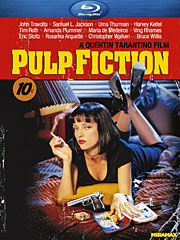Movie Review: “The Hateful Eight”

It’s crazy to think that “The Hateful Eight” almost never happened, but after Quentin Tarantino furiously shelved the project following the leak of his unfinished script, cooler heads eventually prevailed. Though the writer/director’s first crack at making a Western resulted in the slightly disappointing “Django Unchained,” Tarantino’s second attempt is a much-improved genre piece that represents his most accomplished work behind the camera to date. “The Hateful Eight” is filled with the same self-indulgent tendencies that fans have come to expect from his movies, but while it doesn’t exactly earn its three-hour runtime, this Agatha Christie-styled whodunit is a lot of fun thanks to a smartly crafted script and riotous performances from its ensemble cast.
Set in post-Civil War Wyoming, the film stars Kurt Russell as John “The Hangman” Ruth, a well-known bounty hunter who earned his nickname as the only one in his trade who actually bothers bringing fugitives in alive to be hanged for their crimes. John is in the process of transporting wanted murderer Daisy Domergue (Jennifer Jason Leigh) to Red Rock to collect the $10,000 bounty on her head when a blizzard forces them to take shelter at Minnie’s Haberdashery in the mountains, where he finds himself trapped in a room with six other strangers he doesn’t trust. In fact, John is confident that at least one of them is in cahoots with Daisy, and he’s determined to figure out who it is before they make their move.
In addition to the two stranded men he comes across on his way to Minnie’s – Major Marquis Warren (Samuel L. Jackson), a Union soldier turned fellow bounty hunter, and Chris Mannix (Walton Goggins), a Southern rebel who claims that he’s the new sheriff of Red Rock – John’s list of suspects includes local hangman Oswaldo Mobray (Tim Roth), mysterious cowboy Joe Gage (Michael Madsen), Confederate general Sandy Smithers (Bruce Dern) and a Mexican named Bob (Demian Bichir) who’s looking after the trading post while its owners are away. Confined to the cabin until the storm passes, paranoia begins to set in among the eight strangers as identities and motivations are questioned, secrets are revealed and blood is spilled.
You can follow us on Twitter and Facebook for content updates. Also, sign up for our email list for weekly updates and check us out on Google+ as well.

 Last week, I invoked the literal spirit of
Last week, I invoked the literal spirit of 












